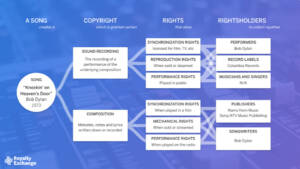Understanding YouTube Analytics for Musicians

Introduction
Why YouTube Analytics is important for musicians
YouTube Analytics is an essential tool for musicians who want to grow their audience and increase their revenue. By analyzing the data provided by YouTube Analytics, musicians can gain insights into their audience demographics, viewing habits, and engagement levels. This information can be used to create more targeted and effective marketing campaigns, as well as to optimize content for maximum engagement. Additionally, YouTube Analytics can help musicians track their earnings and identify opportunities for monetization, such as through advertising revenue or merchandise sales. Overall, understanding YouTube Analytics is crucial for musicians who want to succeed in the highly competitive world of online music.
What YouTube Analytics can tell you about your audience
YouTube Analytics can provide valuable insights into your audience demographics, including their age, gender, location, and interests. This information can help you tailor your content to better suit your audience’s preferences and interests. For example, if you notice that a large portion of your audience is located in a particular region, you may want to consider incorporating local references or events into your content. Additionally, understanding your audience’s interests can help you create more targeted content that resonates with them and keeps them engaged. By regularly analyzing your YouTube Analytics, you can gain a deeper understanding of your audience and make informed decisions about your content strategy.
Understanding YouTube Analytics
Overview of YouTube Analytics dashboard
The YouTube Analytics dashboard provides a comprehensive overview of a musician’s channel performance. It includes data on views, watch time, engagement, and demographics of the audience. The dashboard also displays the top-performing videos, traffic sources, and revenue generated from ads. This information can help musicians understand their audience better and make informed decisions about their content strategy. By analyzing the data, musicians can identify the type of content that resonates with their audience and create more of it. The dashboard is a powerful tool that can help musicians grow their channel and reach a wider audience.
Key metrics to track
The key metrics to track in YouTube Analytics for musicians include views, watch time, engagement, and demographics. Views and watch time are important because they indicate how many people are watching your videos and for how long. Engagement metrics such as likes, comments, and shares show how your audience is interacting with your content. Demographics data can help you understand who your audience is and where they are located, which can inform your marketing and touring strategies. By regularly monitoring these metrics, you can gain insights into what is working and what isn’t, and make data-driven decisions to improve your YouTube presence and grow your fanbase.
How to interpret data
Interpreting data is crucial to understanding the performance of your YouTube channel. The YouTube Analytics dashboard provides a wealth of information, including views, watch time, engagement, and demographics. It’s important to pay attention to trends over time and compare data to previous periods to identify areas of growth or decline. Additionally, understanding the audience retention graph can help you determine which parts of your videos are most engaging and where viewers may be dropping off. By regularly analyzing your data, you can make informed decisions about content creation and promotion strategies to improve the performance of your channel.
Using YouTube Analytics to improve your music career
Identifying your target audience
Identifying your target audience is crucial for any musician looking to grow their YouTube channel. By understanding who your audience is, you can tailor your content to their interests and preferences, which will ultimately lead to higher engagement and more loyal fans. YouTube Analytics provides valuable insights into your audience demographics, including age, gender, location, and interests. Use this information to create content that resonates with your target audience and to develop a marketing strategy that reaches them where they are most active. Remember, the more you know about your audience, the better equipped you are to create content that they will love and share with others.
Optimizing your content for better engagement
To optimize your content for better engagement, it’s important to understand what your audience wants to see. Take a look at your YouTube Analytics to see which videos are performing well and which ones aren’t. Pay attention to metrics such as watch time, average view duration, and audience retention. This will give you an idea of what type of content your viewers are interested in and how long they are willing to watch it for. Use this information to create more of the content that is resonating with your audience and try to improve on the areas where your videos are falling short. Additionally, make sure to include calls to action in your videos, such as asking viewers to like, comment, and subscribe, as this can help increase engagement and build a loyal fanbase.
Creating a content strategy based on data
Creating a content strategy based on data is crucial for musicians who want to grow their audience on YouTube. By analyzing the data provided by YouTube Analytics, musicians can identify which videos are performing well and which ones are not. This information can help them create more of the content that their audience enjoys and avoid creating content that doesn’t resonate with their viewers. Additionally, musicians can use data to identify trends and topics that are popular among their audience, allowing them to create content that is relevant and engaging. By using data to inform their content strategy, musicians can increase their chances of success on YouTube and build a loyal fanbase.
Collaborating with other musicians and creators
Collaborating with other musicians and creators can be a great way to expand your audience and reach new fans. YouTube analytics can help you identify potential collaborators by showing you which channels have similar audiences to your own. You can also use analytics to track the success of your collaborations and see how they impact your channel’s growth and engagement. When collaborating, it’s important to choose partners who align with your brand and values, and to communicate clearly about your goals and expectations for the project. By working together, you can create content that is more engaging and appealing to a wider audience.
Conclusion
Summary of key takeaways
In summary, YouTube Analytics is a powerful tool for musicians to track their performance on the platform. By understanding the key metrics such as watch time, engagement, and demographics, musicians can make informed decisions about their content strategy and audience targeting. It’s important to regularly review and analyze the data to identify trends and areas for improvement. Additionally, utilizing features such as end screens and annotations can help increase engagement and drive viewers to other content. With a solid understanding of YouTube Analytics, musicians can optimize their presence on the platform and grow their fanbase.
Final thoughts on using YouTube Analytics for musicians
In conclusion, YouTube Analytics is a powerful tool that can help musicians understand their audience and improve their content strategy. By analyzing metrics such as watch time, engagement, and demographics, musicians can tailor their videos to better resonate with their viewers and attract new fans. It’s important to regularly review and analyze your YouTube Analytics data to track your progress and make informed decisions about your content. With the right approach, YouTube can be a valuable platform for musicians to grow their audience and connect with fans around the world.








